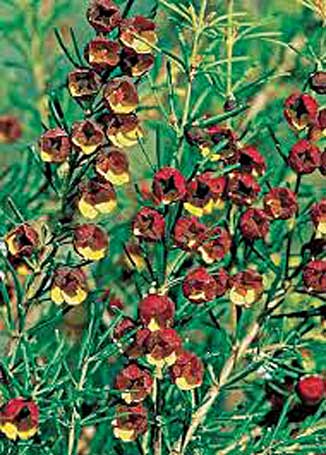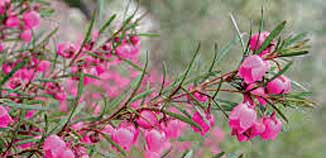Just a wee vase of those dark-brown and gold bell-shaped blooms brings the welcome scent of spring inside our homes.
Brown boronia (B. megastigmal) has captured the imagination of generations of gardeners. It is justifiably one of our best-known, spring-flowering shrubs with an intense, lemon-scented fragrance that wafts throughout your garden, delighting the senses. The fine, feathery foliage also provides year round scent.
The small, evergreen shrub grows into a bush of around one metre by one metre, and is one of more than 60 species, which now include a number of bicolour and dwarf forms, many with pink or mauve flowers, although the brown boronia, particularly the variety, ‘Heaven Scent,’ is the most fragrant. Unfortunately it also tends to be the shortest-lived, seldom lasting beyond 4-5 years, but can be easily propagated from cuttings using young stem tips at a half-ripe stage.

Boronia is an Australian import, named after Italian botanist, Francesco Borone (1769-1794), and prefers moist, well-drained soil in full sun or part shade. Like many Australian natives boronias love the sun (approximately six hours per day of sunlight is preferred, but in very hot places don’t leave them devoid of all shade). Some will tolerate very light frosts.
Avoid adding lime to soil – the plants require acid conditions, similar to that of camellias and azealeas.
They can be grown from seed – August/September are good planting months – just remember the seeds are hard-coated and will benefit from soaking in hot water before sowing.
They’ll need a light prune immediately after flowering to maintain shape, and to assist re-growth. It will also prolong the shrub’s notoriously short life – don’t count on a life span of more than 5-7 years. Mother Nature has designed it that way deliberately – in Australia it usually regenerates from seed after being destroyed by fire.
Varieties include ‘Harlequin,’ a form of brown boronia, which produces red and yellow flowers, and the mauve-flowered B. denticulata, one of the hardiest members of the genus – the bush carries masses of starry blooms on branching flower stalks. However, the real show-off is B. heterophylla, which has fine, green, delicate foliage, smothered with bright, rosy-red flowers from late winter to early summer.

